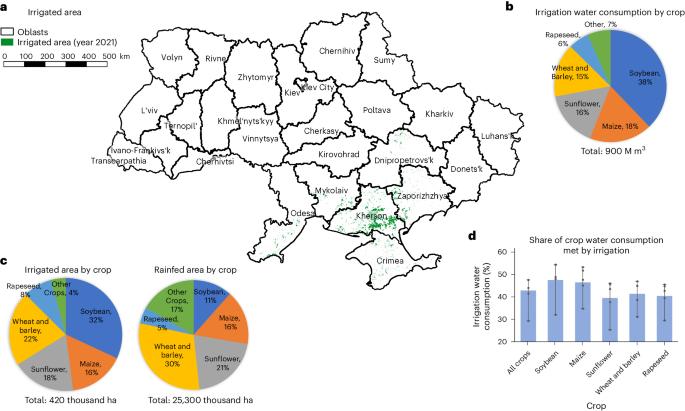Regional irrigation expansion can support climate-resilient crop production in post-invasion Ukraine
IF 23.6
Q1 FOOD SCIENCE & TECHNOLOGY
引用次数: 0
Abstract
Ukraine supplies a large proportion of grain and oilseeds to the world market and faces disruptions from the Russian invasion in 2022. Here we explore the combined effects of the invasion and climate change on Ukraine’s irrigation. In 2021, only 1.6% of Ukraine’s cropland was irrigated. Of this portion, 73% experienced substantial declines in irrigated crop production following the invasion. We estimate that by the mid-twenty-first century, three-quarters of croplands will experience water shortages, making business-as-usual rain-fed agricultural practices inadequate in addressing the challenges posed by climate change. We explore how leveraging local surface and groundwater resources could enable sustainable irrigation expansion over 18 million hectares of croplands and form a viable climate adaptation strategy. Finally, we identify regions for implementing enhancements or expansions of irrigation systems that can foster a more resilient agricultural sector—underscoring the growing importance of irrigation in sustaining crop production in Ukraine. Destruction of the Kakhovka Dam in 2023 caused water shortages in two-thirds of Ukraine’s irrigated regions, highlighting the need for localized and climate-resilient irrigation strategies to support future crop production in Ukraine.


扩大区域灌溉可支持入侵后乌克兰具有气候适应能力的作物生产。
乌克兰向世界市场供应大量谷物和油籽,并面临着 2022 年俄罗斯入侵的干扰。在此,我们探讨了入侵和气候变化对乌克兰灌溉的综合影响。2021 年,乌克兰只有 1.6% 的耕地得到灌溉。其中 73% 的灌溉作物产量在入侵后大幅下降。我们估计,到二十一世纪中叶,四分之三的耕地将面临缺水问题,这使得一切照旧的雨水灌溉农业做法不足以应对气候变化带来的挑战。我们探讨了如何利用当地的地表水和地下水资源,实现 1800 万公顷农田的可持续灌溉,并形成可行的气候适应战略。最后,我们确定了实施灌溉系统改进或扩建的区域,这些区域可促进农业部门更具复原力--强调了灌溉在维持乌克兰作物生产方面日益增长的重要性。
本文章由计算机程序翻译,如有差异,请以英文原文为准。
求助全文
约1分钟内获得全文
求助全文

 求助内容:
求助内容: 应助结果提醒方式:
应助结果提醒方式:


